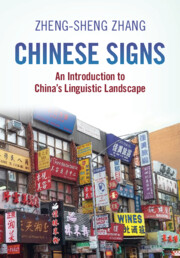160 results
12 - Style
- from Part II - Forms of the Poem
-
-
- Book:
- The Cambridge Companion to the Poem
- Published online:
- 30 May 2024
- Print publication:
- 06 June 2024, pp 196-210
-
- Chapter
- Export citation
3 - The Tricks of the Writing Trade
-
- Book:
- Compelling Communication
- Published online:
- 30 May 2024
- Print publication:
- 30 May 2024, pp 67-92
-
- Chapter
- Export citation
18 - Finding Your Voice
- from Part IV - Building a Career
-
-
- Book:
- The Cambridge Companion to Composition
- Published online:
- 25 May 2024
- Print publication:
- 30 May 2024, pp 291-300
-
- Chapter
- Export citation
Part III - Styles, Conventions, and Issues
-
- Book:
- The Cambridge Companion to Composition
- Published online:
- 25 May 2024
- Print publication:
- 30 May 2024, pp 175-284
-
- Chapter
- Export citation
Chapter 15 - Style and Language
- from Part III - Literary Background
-
-
- Book:
- Jonathan Swift in Context
- Published online:
- 02 May 2024
- Print publication:
- 09 May 2024, pp 116-122
-
- Chapter
- Export citation
8 - Ecce Mann
-
-
- Book:
- Nietzsche and Literary Studies
- Published online:
- 03 May 2024
- Print publication:
- 25 April 2024, pp 186-209
-
- Chapter
- Export citation
1 - Heraclitus’ Clarity
-
-
- Book:
- Nietzsche and Literary Studies
- Published online:
- 03 May 2024
- Print publication:
- 25 April 2024, pp 16-36
-
- Chapter
- Export citation
24 - Variation in Gesture: A Sociocultural Linguistic Perspective
- from Part V - Gestures in Relation to Interaction
-
-
- Book:
- The Cambridge Handbook of Gesture Studies
- Published online:
- 01 May 2024
- Print publication:
- 18 April 2024, pp 616-640
-
- Chapter
- Export citation
1 - Why Signs?
- from Part I - General Characteristics
-
- Book:
- Chinese Signs
- Published online:
- 29 February 2024
- Print publication:
- 07 March 2024, pp 3-9
-
- Chapter
- Export citation
Possessive pronouns in Welsh: Stylistic variation and the acquisition of sociolinguistic competence – Corrigendum
-
- Journal:
- Language Variation and Change / Volume 36 / Issue 1 / March 2024
- Published online by Cambridge University Press:
- 06 March 2024, p. 121
- Print publication:
- March 2024
-
- Article
-
- You have access
- Open access
- HTML
- Export citation

Chinese Signs
- An Introduction to China's Linguistic Landscape
-
- Published online:
- 29 February 2024
- Print publication:
- 07 March 2024
Possessive pronouns in Welsh: Stylistic variation and the acquisition of sociolinguistic competence
-
- Journal:
- Language Variation and Change / Volume 36 / Issue 1 / March 2024
- Published online by Cambridge University Press:
- 30 January 2024, pp. 25-48
- Print publication:
- March 2024
-
- Article
-
- You have access
- Open access
- HTML
- Export citation
Chapter 21 - Messiaen and the Organ Recordings
- from Part III - Composers, Performers, and Critics
-
-
- Book:
- Messiaen in Context
- Published online:
- 09 November 2023
- Print publication:
- 30 November 2023, pp 190-198
-
- Chapter
- Export citation
Chapter 4 - Messiaen and the Paris Conservatoire
- from Part I - Mondial Messiaen
-
-
- Book:
- Messiaen in Context
- Published online:
- 09 November 2023
- Print publication:
- 30 November 2023, pp 27-36
-
- Chapter
- Export citation
4 - How to Watch Jazz
- from Part I - Elements of Sound and Style
-
-
- Book:
- Jazz and American Culture
- Published online:
- 09 November 2023
- Print publication:
- 30 November 2023, pp 64-78
-
- Chapter
- Export citation
Chapter 12 - Walter Pater, Charles Lamb, and ‘the value of reserve’
- from Part II - Individual Authors: Early Moderns, Romantics, Contemporaries
-
-
- Book:
- Walter Pater and the Beginnings of English Studies
- Published online:
- 14 November 2023
- Print publication:
- 09 November 2023, pp 239-254
-
- Chapter
- Export citation
Chapter 7 - Walter Pater, Second-Hand Stylist
- from Part I - General
-
-
- Book:
- Walter Pater and the Beginnings of English Studies
- Published online:
- 14 November 2023
- Print publication:
- 09 November 2023, pp 133-148
-
- Chapter
- Export citation
Introduction: Pater and English Literature
-
-
- Book:
- Walter Pater and the Beginnings of English Studies
- Published online:
- 14 November 2023
- Print publication:
- 09 November 2023, pp 1-32
-
- Chapter
- Export citation
Chapter 6 - Form, Matter, and Metaphysics in Walter Pater’s Essay on ‘Style’
- from Part I - General
-
-
- Book:
- Walter Pater and the Beginnings of English Studies
- Published online:
- 14 November 2023
- Print publication:
- 09 November 2023, pp 118-132
-
- Chapter
- Export citation
7 - How Does Grammar Combine with Other Elements of Language?
-
- Book:
- Socio-syntax
- Published online:
- 19 October 2023
- Print publication:
- 02 November 2023, pp 171-206
-
- Chapter
- Export citation



